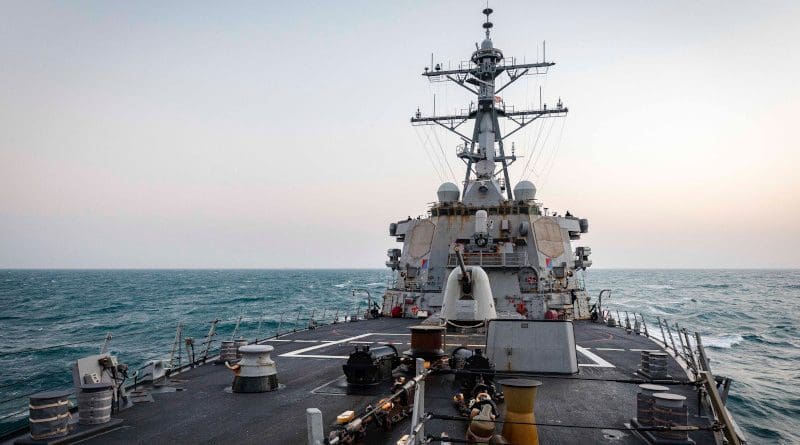Getting 2022 Right: Three Political Risk Predictions For The Coming Year – OpEd
By Arab News
By John C. Hulsman*
As I wrote in my last book about the political risk industry, “To Dare More Boldly: The Audacious Story of Political Risk,” I have long held heretical views about my chosen profession. Despite their shiny exteriors, the recent predictive call record of many top firms has been nothing short of abysmal.
To get out from under this inconvenient truth, they now disingenuously tell you that their predictive records don’t matter much; as if being analytically right were not at the core of the profession. We must not let them get away with this conjuring trick. As I wrote in the book, political risk calls are a lot like baseball; while there is an undoubted element to chance in the game, there is a lot more skill than randomness driving both fields of work. In both cases, over time, the best teams tend to win the World Series, real or analytical. If the soothsaying perfection of Merlin is out of the question, mastering political risk analysis is not.
So my firm is putting its 80 percent positive call record over the past decade on the line here, with three predictions for 2022.
- The COVID-19 crisis will come to an end. It is surely true that COVID-19 is not going anywhere; we are all going to have to learn to live with it. However, as a world historical crisis, its deadly reign is nearly over. In terms of the two key initial factors put forward by governments in faraway March 2020 that must matter above all else — the death rate and the hospital admission rate — COVID-19 is already winding down.
The number of people in hospital in England is less than half what it was a year ago, despite there being three times as many cases. This is because the omicron variant, in an effort to survive — in line with Charles Darwin’s theory of evolution — is far less lethal than earlier strains, even as it is far more transmissible and vaccine-resistant. Overall, this is good news. Weaker strains of a more transmissible version of the virus mean COVID-19 is well on its way to becoming just another variant of flu, rather than a world-altering emergency. This is the year it ceases being the defining political risk of our planet.
- The Sino-American “cold war” is the pivotal geostrategic feature of our era. Historically, such a political competition has always been likely. As the American political scientist Graham Allison has pointed out, “Thucydides’s Trap” — the Greek historian’s metaphor for Athens’s challenge to Sparta in ancient Greece —makes clear that 12 out of 16 times in the past 500 years there has been a war when a rising superpower (such as China) has bumped into an established superpower (such as the US).
Xi Jinping’s China is a peaking power — much like the Kaiser’s Germany of the 1910s and imperial Japan in the 1930s — whose march to superpower status has been blunted, leaving it aggressive and at a strategic crossroads. Its effortless rise to superpower status has run into terrible demography (China will get old before it gets rich), a giant real estate bubble and a shaky shadow banking system, and a recognition by its Asian neighbors of its adventurism, from India to the South China Sea. The counter-reaction has led to the rise of an anti-Beijing coalition from the Quadrilateral Initiative (composed of India, Japan, Australia and the US) to the AUKUS Defense Treaty between the UK, Australia, and the US. With Taiwan as the key flashpoint to watch over the next half decade — the Berlin of this new “cold war” — the moment of maximum peril lies in the medium term. But it is coming.
- The beast of endemic inflation has been loosed. Overly sanguine central banks have taken their eye off the ball, unleashing the beast of endemic inflation after a hibernation of 40 years.
The one global supply chain — centered on the US and China — has been challenged by the coming of the aforementioned cold war between the two superpowers. Geopolitics, for the first time in two generations, now trumps geo-economics, as countries care far more about where pharmaceuticals and semi-conductor chips are made, and less about whether they are manufactured in the most economically efficient way. Onshoring, regionalization, and hedging mean that there will be many new economic alternatives to the one global supply chain — but at an increased price, which will fuel inflation.
Moreover, policymakers, particularly in the Biden White House, have poured gasoline on the raging economic fire, in terms of wildly profligate spending. As Larry Summers, Treasury Secretary under Bill Clinton, makes clear, if you increase fiscal stimulus by 14-15 percent, as Trump and Biden have done, while the economy is only a couple of percentage points short of capacity, the math is the math: You will have skyrocketing rates of inflation. True to form, the inflation rate in the US was a whopping 6.8 percent in November. The beast of endemic inflation is once again roaming the earth.
Take these predictions to the bank; hold us to account for the predictions we make, and for the work that we do. On that bold note, I wish you the happiest of new years.
- John C. Hulsman is the president and managing partner of John C. Hulsman Enterprises, a prominent global political risk consulting firm. He is also a senior columnist for City AM, the newspaper of the City of London. He can be contacted via johnhulsman.substack.com.

